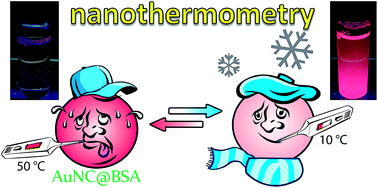Exploring luminescence-based temperature sensing using protein-passivated gold nanoclusters†
Abstract
We explore the analytical performance and limitations of optically monitoring aqueous-phase temperature using protein-protected gold nanoclusters (AuNCs). Although not reported elsewhere, we find that these bio-passivated AuNCs show pronounced hysteresis upon thermal cycling. This unwanted behaviour can be eliminated by several strategies, including sol–gel coating and thermal denaturation of the biomolecular template, introducing protein-templated AuNC probes as viable nanothermometers.


 Please wait while we load your content...
Please wait while we load your content...